Whether you are an experienced ski lover or you are only just starting your journey on the slopes, one thing that remains consistent once you hit the snow is the cold. When that freeze hits your hands, it becomes all near impossible to maintain control. Needless to say, if you really want to optimize your performance and enjoy the wicked slopes more, you’ll need a nice pair of ski gloves.
Good ski gloves are not like your ordinary pair of gloves. These ones come specially made, integrated with different technologies such as Thermacore insulation and Thinsulate, which adds an extra layer of cover between you and frostbite. They are designed using waterproof material too, to keep your hands nice and dry and breathability, for when they get too hot and sweaty.
Of course, just like any other ski gear out there, there is quite a variety of ski gloves to choose from. The gloves come in different styles, fits and materials which would make finding the right one an uphill battle. Fortunately, we’ve got just the list for you below are 10 of the best ski gloves you’ll ever find.
Top 10 Ski Gloves Of 2020 Reviewed
1. Alpine Swiss Waterproof Snow Gloves
These ski gloves from Alpine Swiss is the best at locking in warmth even during the coldest winters. The outer shell is made of durable 150D polyester that’s both waterproof and windproof while the inner lining is made of soft fleece. But that’s not all. The adjustable pull straps around the wrists secure the gloves on your hands and prevent snow from creeping in. Then there’s the drawstring closure that can also be tightened to provide dual wind chill protection. However, this doesn’t provide you with the best dexterity. The liner isn’t removable for versatility. And this is not touch screen compatible.
Pros:
- Dual wind chill protection
- Waterproof
- Very affordable
Cons:
- Not the best dexterity
- A liner isn’t removable
- Not touchscreen compatible
2. MCTi Waterproof Mens Ski Gloves Winter Warm 3M Thinsulate Snowboard Snowmobile Cold Weather Gloves
 Best Ski Gloves For The Winter
Best Ski Gloves For The Winter
The MCTi men’s ski glove uses a combination of many different technologies to keep you warm and toasty when you are out in the cold snow. This includes 140 grams of warm cotton and 40 grams 3mThinsulate which makes it thick enough to hold up against the cold. They are good for a range of cold activities including snowboarding, skiing, winter riding and hiking.
The glove is able to retain its integrity against water and wind, using a composite three-layered softshell. It also has a waterproof TPU membrane which is inserted to keep your hands entirely free of water, even during long periods outdoors in the snow. MCTi even went the extra mile to incorporate a Nuback palm and reinforce rubber on the fingers to prevent wear and tear. It also has a zipper in place to store stuff such as cash and ID cards, with a really soft lining for maximum comfort for the whole family.
Pros:
- The gloves are fully waterproof
- Has a pocket in place for storing necessities
- They are really affordable
Cons:
- The lining tends to come out as you pull your hand out
- Some users say it’s a bit too tight-fitting
- They are a bit bulky; won’t fit in small pockets
3. Kinco Pigskin Leather Glove
 Best Ski Gloves For Big Hands
Best Ski Gloves For Big Hands
If you want something durable but cheap, the Kinco Pigskin Leather Ski Glove is a great option. This glove was the one that started it all (at least, the trend where leather became material for ski gloves) so it’s only fitting that we include it on the list. Aside from being the original leather ski glove, it features extra HeatKeep thermal lining, reinforced leather patches on the palms and fingertips for extra abrasion protection, a comfortable knit wrist, a shirred elastic wrist, and a paring hook.
The gloves feature a reinforcing leather pull tab that helps ensure that the knit won’t stretch too much, preventing any cold or snow to seep in. Plus, this comes with Nikwax Waterproofing Wax so you can ensure that the gloves stay waterproof and warm. However, the gloves do need some breaking in or else they’ll feel stiff and uncomfortable. The sizes run big. Also, while these gloves are warm, they may not be warm enough for individuals who have hands then run cold.
Pros:
- Durable
- Comes with a waterproofing wax
- Budget-friendly
Cons:
- Needs breaking in
- Sizes run big
- May not be warm enough for some
4. Burton Men’s Deluxe Gore-Tex Glove
 Best Men’s Deluxe SKi Gloves
Best Men’s Deluxe SKi Gloves
This gauntlet looking ski glove from Burton is a great option for resort skiers – individuals who don’t want to send a ton on their gear but would like to get good value for their money. The Burton Men’s Deluxe Gore-Tex Glove comes as a deluxe version of an already top seller of the brand so you can rest assured it better made, with upgraded features. The outer shell of the glove is made of nylon and leather, while the insulation is Thermacore synthetic.
The glove uses an adjustable strap for a snug fit and will prevent any snow from creeping in. It comes with brushed microfiber fixed lining that wicks away moisture from your skin, combined with the Gore warm technology to keep your hands warm. The Burton Deluxe also features removable inner liners which you can take of if the weather gets warmer. Its ergonomic pre-curved fit makes your hands, not only warm but nimble too for easy movement.
Pros:
- Made of quality 2-layer fabric
- Are comfortable with a nice range of motion
- The inner liners are removable
Cons:
- Can seem a bit bulky
5. Gordini Men’s GTX Storm Trooper II Gloves
 Best Ski Gloves For Cold Weather
Best Ski Gloves For Cold Weather
The Gordini GTX Storm Trooper II is made of 94% nylon and 6% spandex with a Gore-Tex insert and Megaloft insulation. This gauntlet style glove features a pre-curved fit, wrap caps, a cinch closure, and reinforcement on the index finger and thumb. It’s warm and extremely comfortable, more so than the Burton. However, it isn’t as flexible as the Burton because its liners are built-in; you won’t be able to remove the lining on warmer ski days. It isn’t as waterproof as we’d like. It’s definitely not for damp ski days. Also, the wrist straps are a bit flimsy.
Pros:
- Comfortable and warm
- Pre-curved fit
- Durable
Cons:
- Liners are not removable
- Not as waterproof as others
- Flimsy wrist straps
6. Black Diamond Mercury Mitts
 Best Ski Gloves For Warmth
Best Ski Gloves For Warmth
If mittens are more your style, there’s none better than the Black Diamond Mercury Mitts. These mittens use PrimaLoft which is a fleece lining with BDry waterproof fabric so that your hands always stay warm and dry, even during close-to-freezing temps. They are very weather-resistant, abrasion-resistant, and lightweight. And despite being a bit bulky, you still get pretty good dexterity with these babies on. However, the sizes run small. Breathability isn’t that good; you may find your hands sweating. And it doesn’t come with wrist straps/cords which prevents you from losing them whenever you take them off.
Pros:
- Very warm
- Weather-resistant
- Lightweight
Cons:
- Not breathable enough
- Sizes run small
- No wrist straps or cords
7. Dakine Titan Glove
The Dakine Titan Glove is a gauntlet style ski glove with a polyester shell and high-loft synthetic insulation. It features an easy-to-adjust cinch closure, a zippered pocket for a hand warmer, a nose wipe thumb panel, and a GORE-TEX waterproof, breathable insert to prevent moisture from accumulating inside your glove. There’s a removable stretch fleece liner that you can use to increase warmth on extra frigid days. And the glove features a screen sensitive thumb and index finger. However, there have been issues with durability. It isn’t as warm as other gloves within the same price range. And it doesn’t provide the same dexterity as other gloves we’ve seen.
Pros:
- Waterproof, breathable barrier
- Screen-sensitive thumb and index finger
- Nose wipe thumb panel
Cons:
- Durability issues
- Not as warm as the competition
- Doesn’t provide the same level of dexterity
8. Outdoor Research Revolution
 Best Ski Gloves For Beginners
Best Ski Gloves For Beginners
The Outdoor Research Revolution is a 100% nylon ski glove that features a water-resistant goat leather palm and EnduraLoft insulation (100% polyester). In addition, it has a pull-on loop, a glove clip, nose wipe, ladder-lock wrist cinch, and a removable leash. Aside from being feature-rich, this glove has a good amount of insulation and above average weather resistance which makes it ideal for resort skiers who want a lot of bang for their buck. However, these aren’t the best to wear if it’s colder than 10 degrees Fahrenheit. It also isn’t that breathable which can lead to sweaty hands. And it doesn’t come with a removable liner.
Pros:
- Feature-rich
- Affordable
- Good durability
Cons:
- Not for really cold weather
- Does not include a removable liner
- Not very breathable
9. Outdoor Research Men’s Arete Gloves
 Best Ski Gloves With Removable Liner
Best Ski Gloves With Removable Liner
Another Outdoor Research ski glove, the Arete also has a shell made out of nylon. Its insulation is fleece and the Gore-Tex insert ensures that the inside of the glove remains breathable and waterproof. What we love about the Arete is the removable liner that comes with a silicone grip palm, allowing you to easily use it on warmer ski days. This glove is the perfect choice if you want to do some backcountry skiing or even for some winter climbing. However, the liner is super thin which won’t be of much help when the weather reaches below freezing. Both the gloves and the liner are not touch screen compatible. Also, the size runs small.
Pros:
- Versatility
- Breathability
- Durable
Cons:
- Super thin liner
- Not touchscreen compatible
- Size runs small
10. Outdoor Research Alti
Yes, this is another OR ski glove on our list. There are a lot of things that make this particular glove stand out. For one, it’s one of the most expensive on our list. It’s made of 90% nylon and 10% spandex. It also has AlpenGrip® Palm.
100% polyester tricot lining and PrimaLoft® HiLoft Silver 100% polyester insulation. In short, this glove has better moisture management compared to other OR gloves. In addition, the manufacturer used 3DFit Technology to create an ergonomic design for the entire glove in order to improve overall dexterity. The Alti is incredibly weather resistant and durable. It dries quickly. And the removable interior liner can actually be used as a standalone glove during warmer weather. However, it is a bit bulky (which does affect dexterity) and it takes a bit of time to break in.
Pros:
- Versatility
- Ergonomic design
Cons:
- Expensive
- Bulky
- Requires breaking in
How to Choose the Best Ski Gloves: The Ultimate Buying Guide
Ski gloves are an essential part of your gear. In fact, they’re so critical that they can make or break your ski trip. These gloves are no ordinary gloves. They’re specifically designed to help your hands retain heat, thereby preventing discomfort (at least) and frostbite (yikes!). However, choosing the right ski gloves isn’t easy. There are so many things to choices available and plenty of factors to consider. If you’re looking for your first pair of ski gloves (or a replacement for your old one), our guide will help you understand just what the best ski gloves should be.
Gloves or Mittens?
The answer to this question actually depends on a lot of factors, including the type of activity you’re planning on engaging in.
Gloves: provides better dexterity compared to mittens which makes them more appropriate for activities that require you to handle gear frequently such as opening/closing zippers and adjusting buckles.
Mittens: provide more warmth than gloves because your fingers aren’t separated from each other. However, they don’t offer the same level of dexterity as gloves. Despite that, you can still use these comfortably for skiing and snowboarding.
Lobster: this style, which is also called a 3-finger hybrid, is a cross between the glove and the mitten. Like the name implies, the lobster looks like a lobster glove with the ring and pinky fingers together and the index + middle fingers in another “slot.” This is a good compromise if you want the dexterity of a glove but want something warmer.
3-in-1: this may be the best of both worlds for some users. This type of ski glove features a mitten on the outside with a removable liner glove or vice versa. This enables you to enjoy great dexterity and greater warmth. You can use the liner gloves for handling gear which enables you to still keep your fingers warm. You can purchase a 3-in-1 glove or create one of your own by buying a separate liner for your mitten. Take note that any glove liner you buy should be lightweight and breathable. This is because wearing a double-layered glove can cause your hands to get sweaty or constricted.
How Much Warmth do you Need?
We’ve already mentioned that gloves and mittens provide different levels of warmth. How much warmth you need is entirely dependent on you. Some people tend to get cold hands while others can stay warm even in cold conditions. In addition, where you will be using the gloves will affect how much warmth you’ll need. If you’ll be skiing in warmer conditions, you may want something that isn’t too warm and features good waterproofing (in case you sweat). Colder conditions will require you to get warmer gloves, especially if you’re the type to get cold hands.
What Makes the Gloves Warm?
The amount of warmth a glove provides depends on a number of factors such as the type of shell material, insulation, breathability, and level of water resistance.
Shell
The type of shell material used in a ski glove is typically a synthetic fabric such as nylon. Some like the Kinco Pigskin Leather Glove is made of leather which makes them durable and very warm. However, they need to be chemically treated in order to become waterproof. Some gloves use wool and fleece.
Insulation
There are basically two types of insulation used in ski gloves – down and synthetic. Down is expensive but it provides a lot of benefits. It’s a great insulator while still being light and breathable. It’s also long lasting and easy to compress. However, it must be noted that this type of insulation requires a waterproof outer shell because down becomes a poor insulator when wet. That being said, this is an excellent choice if you’re planning on skiing or snowboarding in cold, dry climates.
Synthetic insulation like the one used in Burton Men’s Gore-Tex Gloves is less expensive than down. But it is an excellent choice if you’re going to be skiing in a damp climate because it does not lose its ability to insulate when wet. Plus, it dries very fast in comparison to down. That being said, synthetic insulation is bulkier and does not provide the same level of warmth as down. It also loses some of its insulating power when compressed.
Waterproof and Breathability
A waterproof, breathable barrier prevents moisture from seeping into the glove due to snow and rain. It also enables any sweat on your hands to escape. This barrier is often a membrane located between the outer shell and the insulation. Sometimes, the barrier is a coating applied to the fabric itself.
Lining
This is an extra layer of material used by manufacturers to provide both comfort and warmth. The lining can be built into the gloves or separate. A separate glove liner enables you to remove them on warmer days and get added warmth during chillier days. The lining of a ski glove can be fleece or wool like the Black Diamond Mercury Mitts. It can also be polyester or synthetic material, preferably one that has moisture-wicking properties to keep your hands dry at all times.
What are the Right Size and Fit?
An ill-fitting ski glove is more than just an issue of discomfort. It will be unable to provide you with the warmth you need. If it’s too big, the airspace inside the glove will require you to expend more body energy in order to heat your extremities. If it’s too small, your wrists may be left exposed to the cold. In addition to all that, an improper fit can affect performance. Too big and you might have a problem gripping your poles. Too small and it may make it difficult for your fingers to move.
To find the right fit, you’ll need to try out some gloves. When wearing them, you should be able to make a fist without feeling that the gloves are too tight or restrictive. In addition, there should be around 1/4 inch of fabric at the end your outstretched fingers. Your palms must be completely inside the cuff with your wrists covered as well. Take note that manufacturers do not follow a universal sizing chart so make sure to check the measurements provided.
What are the Key Features I Should Look for?
Cuff
Whether the cuffs are short or long, your ski gloves should have adjustable cuffs that enable you to secure the gloves on your hands and prevent any snow from entering the gloves through the cuff. The cuff length is a matter of preference. A short cuff will typically end at the base of your wrist which provides you with excellent mobility. You can tuck it inside your jacket to prevent any snow from entering the gloves. A long cuff like the Outdoor Research Revolution extends past your jacket’s sleeve and provides more protection against snow creeping into the glove. Take note that you will also need to consider the cuffs of your jacket before choosing the cuff length of the glove. A short cuff will require your jacket sleeve to also feature adjustable cuffs.
Textured Palm and Fingertips
A lot of ski gloves feature textured and/or reinforced palms and fingertips since these are the areas that get the most use. Not only does this add durability, but it also enables you to have a better grip on your poles or for holding on to ski lifts. Leather and vinyl are excellent materials for creating texture due to its excellent grip and higher durability. The Outdoor Research Men’s Arete Gloves, for example, even features a removable liner with a silicone grip palm.
Wrist Cinches/Straps
This ensures that the gloves or mittens are securely on your hands. Typically, these are either adjustable straps with a velcro closure or a zipper. The Unigear Ski Gloves, for example, comes with easy-to-adjust wrist strap through this features a buckle instead of a zipper or velcro closure.
Nose Wipe
This feature is found on the outer surface of the thumb, an Ultrasuede or some other soft, absorbent material that is specifically for wiping your nose when it starts to drip. Another form of “wipe” is the goggle wipe where rubberized plastic inserts function like mini-squeegees which wipe off any snow or anything else on the lens of your goggles that is obstructing your view.
Wrist Cords
It’s not a good idea to lose your ski gloves while you’re out and about. Wrist cords, or “idiot straps” as they are also called, secure the gloves or mittens to your wrist so that you never drop one accidentally.
Pockets/vents
Some ski gloves like the Dakine Titan Glove feature a pocket on the top of the hand which can function as a storage space for your lift pass, spare change, or a hand warmer in case you need more warmth. It can also function as a vent, allowing air to circulate inside the gloves during the warmer days.
Articulated or Pre-curved Fingers
Some ski gloves like the Gordini Men’s GTX Storm Trooper II Gloves have been shaped and stitched to look like a hand in its natural, relaxed position. Due to this design, the fit and dexterity of the gloves are greatly improved. Not only that, but it also improves blood flow which can increase the warmth of your hands.
Touchscreen Capability
There’s no way you’re going offline even if you’re about to do some slopes. And taking off your ski gloves just to use your phone isn’t something that you’ll want to do, especially on extremely cold days. Some ski gloves feature buttons that link up to your phone’s controls. There are some that simply allows you to use your phone without having to expose your digits to the elements.


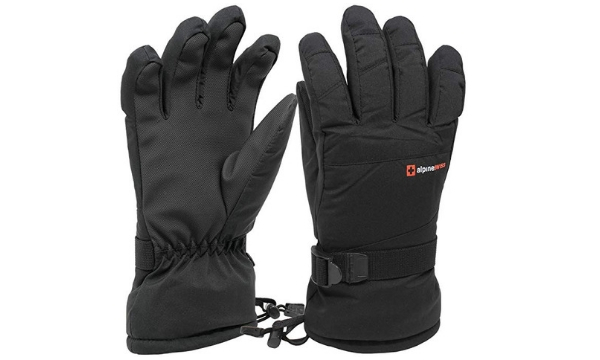
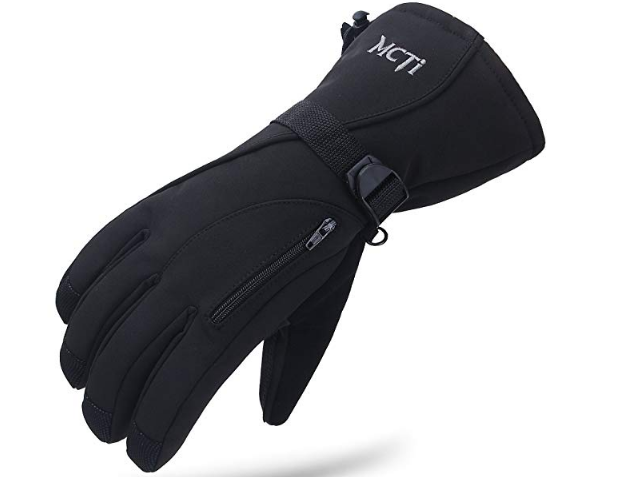
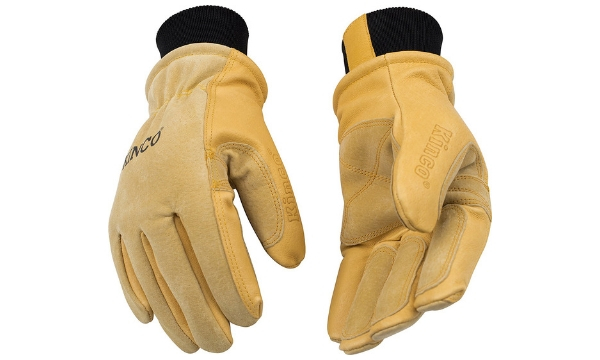
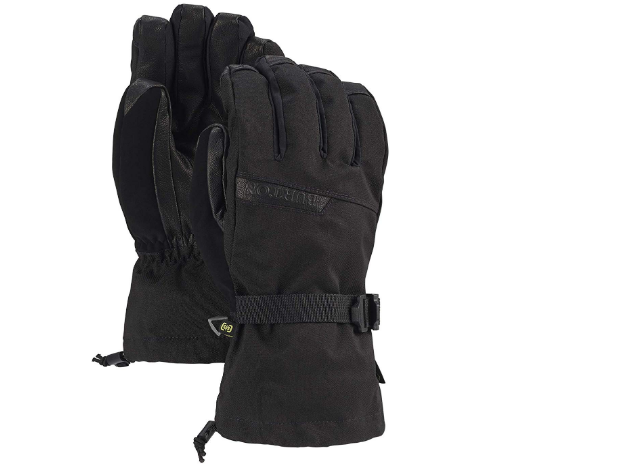
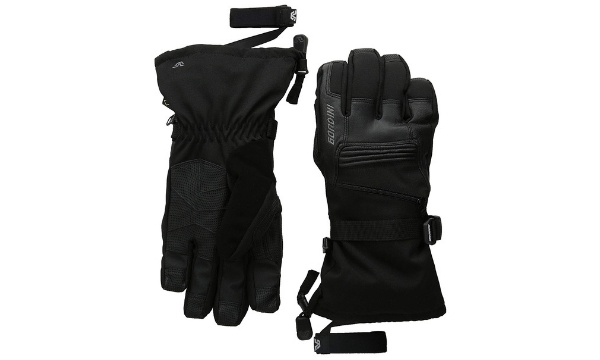
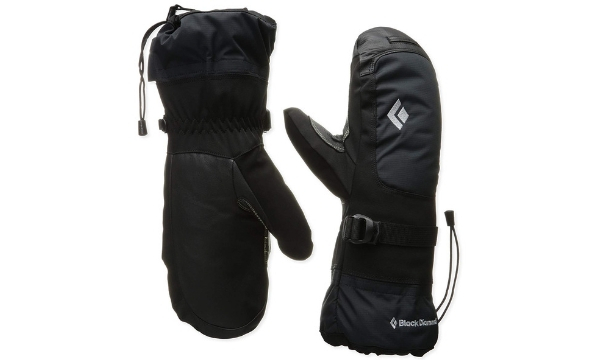
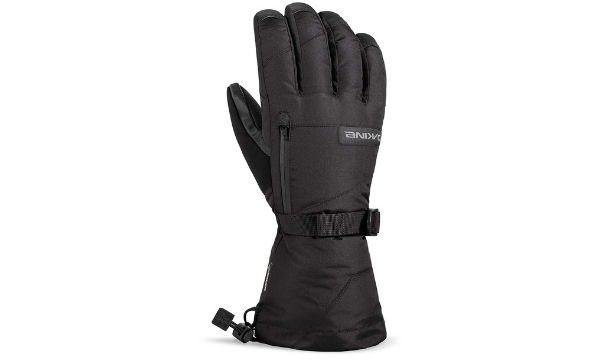
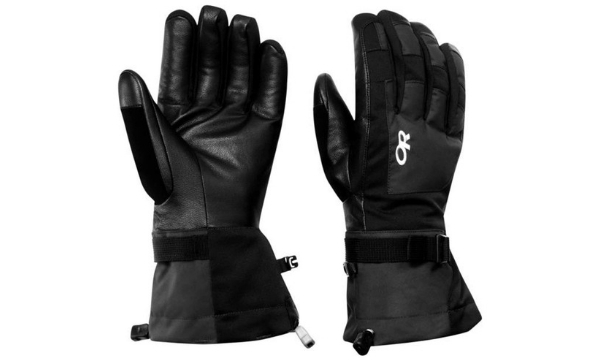
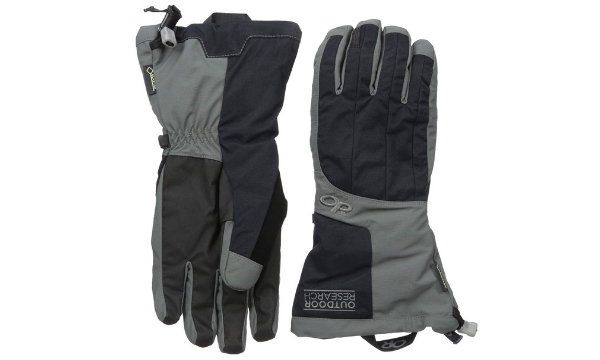
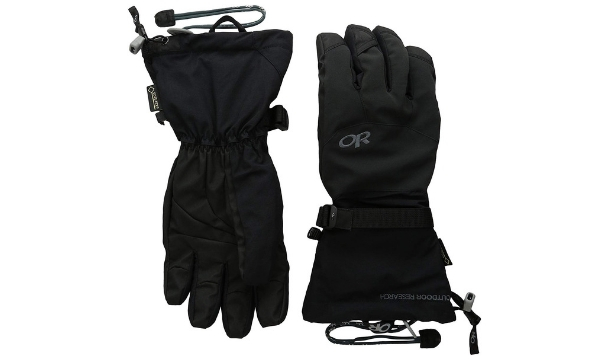




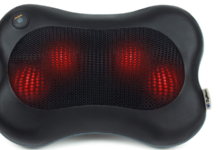






![Best Crochet Hooks for Beginners and Pros [2020 Update] best crochet books](https://www.awebtoknow.com/wp-content/uploads/2018/01/best-crochet-books-100x70.jpg)


